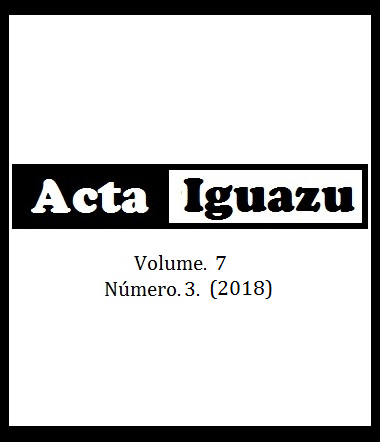Estimation of the commercial height of trees with laser meter: a viable alternative for forest management in the Brazilian Amazon
DOI:
https://doi.org/10.48075/actaiguaz.v7i3.16648Keywords:
Altura comercial, Dendometria, Floresta natural,Abstract
Commercial height of the tree is a key variable for estimating the wood stock in tropical forests managed for timber production purposes. Most available measurement devices present limitations to this type of forest, promoting low precision measurements with high variation errors. Laser meter device appears as a viable alternative, since in addition to using trigonometric principles, it is not necessary that the device is close to the eyes of the meter to carry out the measurement. The device can be used to measure commercial height of trees on flat or sloping terrain from any distance from the tree. However, there are no studies evaluating the precision of this device. Due to importance and difficulties evidenced, the objective of this study was to determine the precision of the laser meter method for estimating the commercial height of trees, as compared to the actual measurement in a tropical forest in the Brazilian Amazon. Measurements were made on 300 trees with commercial height between 7 and 14 m. Actual commercial heights were measured with graduated ruler. Applied tests were: paired t-test, graphical analysis of residues and calculations of bias statistics, mean absolute deviation, standard deviation of differences and coefficient of determination (R2). Paired t-test indicated that the mean of the heights measured by the laser meter is statistically equal to that of the graduated ruler. Measurements with laser meter did not show tendencies (bias) and had low mean error, showing values close to "0". The standard deviation of differences indicated low dispersion of errors. There was no tendency to underestimate or overestimate the commercial heights of trees. Laser meter presents precision for estimating the commercial height of trees in tropical forest in the Brazilian Amazon.
Downloads
Published
How to Cite
Issue
Section
License
Aviso de Direito Autoral Creative Commons
Política para Periódicos de Acesso Livre
Autores que publicam nesta revista concordam com os seguintes termos:
1. Autores mantém os direitos autorais e concedem à revista o direito de primeira publicação, com o trabalho simultaneamente licenciado sob a Licença Creative Commons Attribution que permite o compartilhamento do trabalho com reconhecimento da autoria e publicação inicial nesta revista.2. Autores têm autorização para assumir contratos adicionais separadamente, para distribuição não-exclusiva da versão do trabalho publicada nesta revista (ex.: publicar em repositório institucional ou como capítulo de livro), com reconhecimento de autoria e publicação inicial nesta revista.
3. Autores têm permissão e são estimulados a publicar e distribuir seu trabalho online (ex.: em repositórios institucionais ou na sua página pessoal) a qualquer ponto antes ou durante o processo editorial, já que isso pode gerar alterações produtivas, bem como aumentar o impacto e a citação do trabalho publicado (Veja O Efeito do Acesso Livre).
Licença Creative Commons
Esta obra está licenciada com uma Licença Creative Commons Atribuição-NãoComercial-CompartilhaIgual 4.0 Internacional, o que permite compartilhar, copiar, distribuir, exibir, reproduzir, a totalidade ou partes desde que não tenha objetivo comercial e sejam citados os autores e a fonte.


